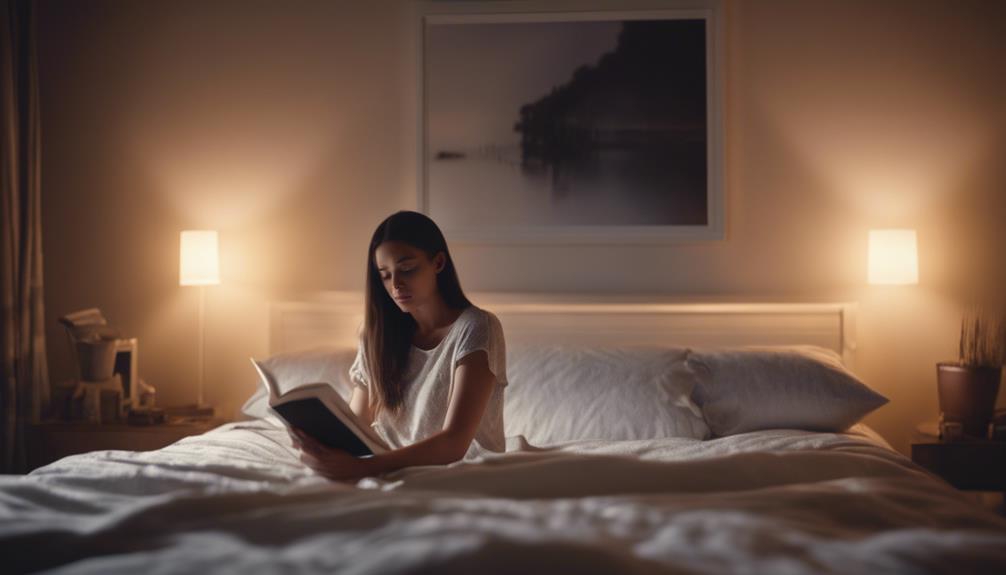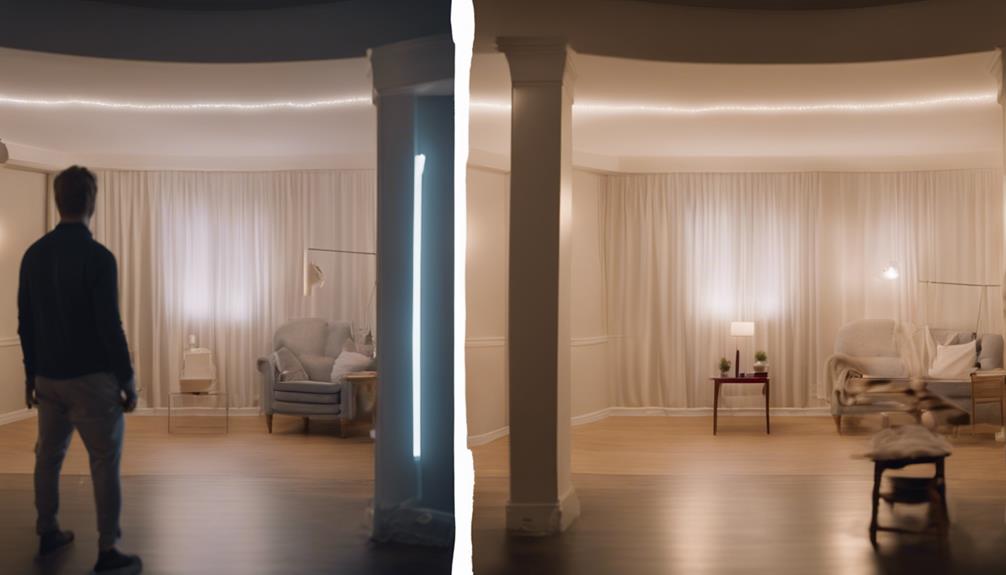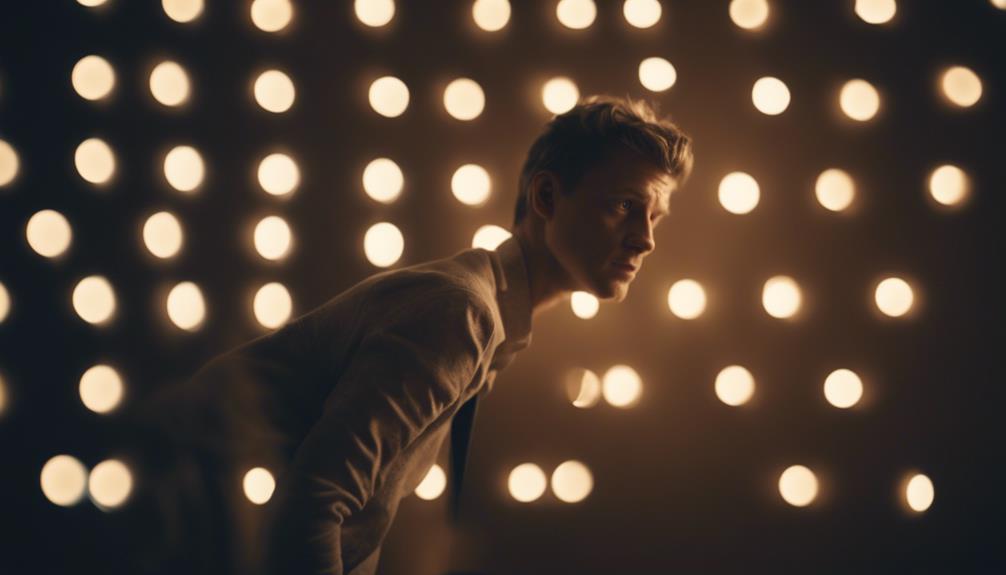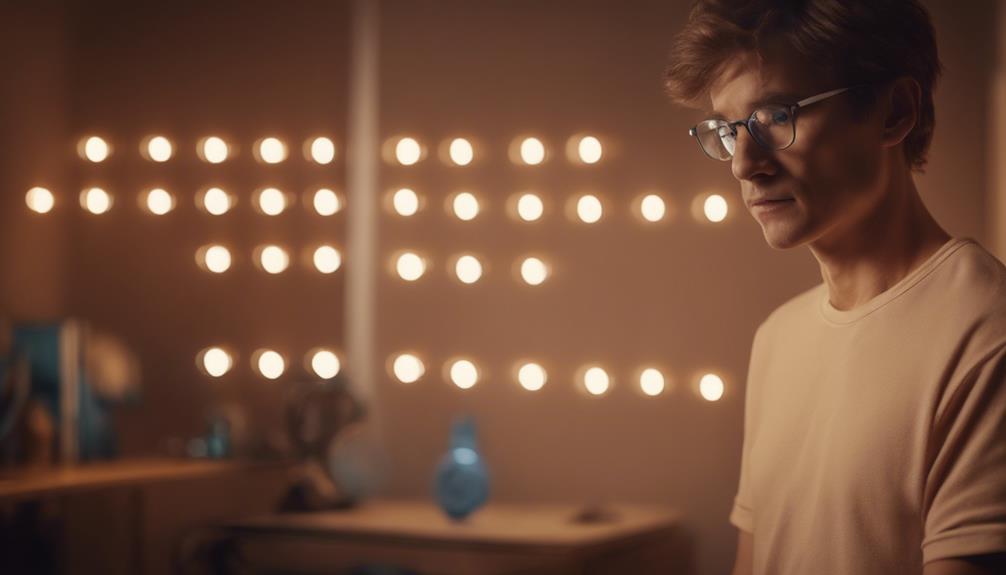LED lighting quality can have a significant impact on individuals who are prone to vertigo, potentially exacerbating symptoms such as headaches and nausea. Lower-quality LEDs that flicker can trigger discomfort, so it is recommended to opt for higher-quality brands that offer stable lighting to reduce the risk of vertigo and maintain overall well-being. Upgrading to LEDs with high refresh rates can help decrease adverse effects, while adjusting brightness and color temperature can enhance comfort. Recognizing the signs of flicker-induced vertigo and choosing dimmable LEDs can improve the overall lighting experience. It is essential to educate oneself on LED quality and flicker triggers in order to make informed decisions and prioritize safety by selecting quality LED lights for an environment that minimizes vertigo. Additional insights are available to further enhance understanding.
Key Takeaways
- Opt for higher-quality LED lights with higher refresh rates.
- Adjust brightness and color temperature for comfort.
- Choose LEDs with dimming capabilities for better control.
- Ensure consistent brightness levels to reduce vertigo potential.
- Educate on flicker vertigo symptoms and prevention strategies.
Understanding Flicker Vertigo
Flicker vertigo, also known as the Bucha effect, poses a significant risk for individuals sensitive to light flickering, especially when exposed to LED lights. This condition can manifest through various symptoms such as sudden headaches, migraines, eye strain, and nausea when triggered by visual stimuli. Dr. Bucha's identification of this phenomenon in the 1950s highlighted the dangers it can pose, particularly in settings like helicopter piloting where flicker vertigo could lead to confusion and accidents.
Management of flicker vertigo involves avoiding exposure to flickering lights, particularly those of low quality that exhibit slow flickering patterns. Seeking medical advice can help in determining suitable prevention strategies to minimize the risk of experiencing these symptoms. By understanding the effects of flicker vertigo and taking proactive steps to limit exposure to potential triggers like LED lights, individuals can mitigate the impact of this condition on their daily lives.
Impact of LED Flickering

The potential health risks associated with LED flickering extend beyond flicker vertigo, particularly in settings where low-quality lighting can exacerbate symptoms for individuals sensitive to visual stimuli. LED lights, especially when flickering, can have various impacts on individuals, including:
- Seizures: Flicker vertigo, also known as the Bucha effect, can trigger seizures in 3% of people with epilepsy.
- Symptoms: LED lights used for holiday decorations, especially in low light settings, can trigger flicker vertigo, leading to sudden headaches, migraines, eye strain, and nausea, especially with slow flickering LED lights.
- Triggers: Dr. Bucha identified flicker vertigo in the 1950s, causing confusion and crashes, particularly in helicopter pilots. Managing flicker vertigo involves avoiding exposure to flickering lights and using higher-quality LED lights to reduce triggers.
It is essential to address these issues by choosing quality LED lights to minimize the risk of triggering adverse symptoms in individuals sensitive to flickering lights.
Choosing Quality LED Lights

When selecting LED lights, prioritize higher-quality options to minimize the risk of triggering vertigo symptoms. Higher-quality LED lights are less likely to induce flicker vertigo compared to lower-quality alternatives.
LED lights with a higher refresh rate can help reduce the likelihood of vertigo symptoms being triggered. Quality LED lights are subjected to rigorous testing to guarantee they emit steady light without flickering, making them a safer option for individuals prone to vertigo triggers.
Investing in reputable LED light brands can provide a more secure lighting choice for those susceptible to vertigo. Additionally, opting for LED lights with consistent brightness levels can further minimize the potential for flicker-induced vertigo.
Effects of Low Light Settings

Using low light settings with LED lighting may worsen symptoms of vertigo, potentially leading to discomfort and health issues. The effects of low light settings with LED lighting can have various negative impacts on individuals, especially those prone to vertigo. Here are some key points to keep in mind:
- LED lighting at low light settings can trigger flicker vertigo, potentially causing headaches, migraines, and eye strain.
- Prolonged exposure to low light settings with LED lighting may also result in nausea and overall discomfort.
- Individuals sensitive to flicker vertigo may experience heightened symptoms when exposed to dim LED lighting environments.
It is important to be mindful of the lighting conditions, particularly when using LED lights at lower intensities, to prevent the onset or exacerbation of vertigo-related symptoms. Adjusting the lighting settings or opting for higher-quality LED lights can help mitigate these adverse effects and promote a more comfortable environment.
Avoiding Slow Flickering Patterns

To reduce the risk of triggering flicker vertigo, individuals should be mindful of avoiding slow flickering patterns in LED lighting. Slow flickering patterns in LED lights can lead to symptoms like headaches, migraines, and nausea associated with flicker vertigo. Those with photosensitivity are particularly susceptible to experiencing flicker vertigo when exposed to slow flickering LED lights.
This sensitivity can dampen the enjoyment of holiday lights, especially during festive seasons. Lower-quality LED lights are more likely to produce the slow flickering patterns that can cause flicker vertigo, affecting individuals, particularly when surrounded by holiday decorations.
Educating About Flicker Triggers

Individuals can benefit from understanding common flicker triggers, such as slow flickering patterns in LED lighting, to prevent the discomfort associated with flicker vertigo. Educating about flicker triggers is important in minimizing the risk of experiencing symptoms related to flicker vertigo, especially with the prevalence of LED lights in various settings.
- Photosensitivity Awareness: Educating individuals about photosensitivity can help them recognize potential signs of flicker vertigo triggered by LED lights.
- Seizure Risk: Understanding that flicker vertigo, also known as the Bucha effect, can provoke seizures in a small percentage of individuals with epilepsy is necessary for safety precautions.
- Quality of LED Lights: Being aware that lower-quality LED lights are more likely to cause flicker vertigo can guide individuals in selecting lighting options that minimize potential triggers.
Seeking Medical Advice

When experiencing symptoms of flicker vertigo, it's important to consult a healthcare provider promptly. By scheduling a check-up, individuals can receive personalized recommendations for managing and preventing episodes of vertigo.
Seeking medical advice can lead to adjustments in lighting settings and tailored plans to minimize the impact of flicker vertigo triggers.
Consult a Specialist
Seeking guidance from a specialized healthcare provider can pinpoint the triggers of flicker vertigo associated with LED lighting. This can lead to personalized strategies for management and prevention. Specialists can provide tailored recommendations for reducing exposure to problematic LED lights, potentially lessening the occurrence of vertigo episodes. Through medical guidance, adjustments to lighting settings or the selection of higher-quality LED products can be advised to minimize the risks of vertigo.
- Specialists can identify specific triggers linked to LED lighting.
- Personalized recommendations can be tailored for managing and preventing vertigo.
- Strategies for reducing exposure to problematic LED lights can be provided.
Schedule a Check-Up
Consider scheduling a check-up with a healthcare provider if experiencing flicker vertigo triggered by LED lighting. Seeking medical advice is important to understand your risk factors and explore potential management strategies for dealing with flicker vertigo.
A healthcare professional can offer guidance on adjusting lighting settings or using higher-quality LED lights to minimize vertigo triggers. By consulting with a medical professional, you can identify personalized prevention methods for flicker vertigo that suit your specific needs.
Regular check-ups guarantee that you stay informed about the latest recommendations and advancements in managing vertigo symptoms related to LED lighting. Don't hesitate to reach out to a healthcare provider for expert advice on addressing flicker vertigo effectively.
Prevention Strategies for Vertigo

To minimize vertigo triggers related to LED lighting, adjusting the brightness and color temperature settings of the lights can be an effective prevention strategy. By following some simple guidelines, individuals can reduce the risk of experiencing vertigo symptoms when exposed to LED lights:
- Choose Higher-Quality LED Lights: Opt for LEDs with a higher refresh rate to lower the chances of triggering vertigo symptoms.
- Optimize Brightness and Color Temperature: Adjusting these settings can help minimize vertigo triggers and create a more comfortable lighting environment.
- Select LEDs with Dimming Capabilities: Having the option to control the light intensity can provide better management of brightness levels, reducing the likelihood of vertigo episodes.
Making Informed LED Choices

When selecting LED lighting options, consumers should prioritize understanding the quality and features of the lights to make informed choices. Lower-quality LED lights are more likely to trigger flicker vertigo due to their flickering patterns.
To avoid exposure to problematic LED lights, individuals should be aware of the signs and symptoms of flicker vertigo. Adjusting lighting settings or opting for higher-quality LED lights can help reduce the risk of triggering flicker vertigo symptoms.
It's recommended that those prone to flicker vertigo seek medical advice to effectively manage the condition. Collaborating with manufacturers to improve LED light quality can contribute to creating a safer environment for individuals sensitive to flicker vertigo.
Frequently Asked Questions
Can LED Lights Trigger Vertigo?
LED lights can trigger vertigo in people sensitive to flickering. This phenomenon, known as flicker vertigo or the Bucha effect, can lead to headaches, migraines, and nausea. Dr. Bucha first identified this issue in the 1950s.
Lower-quality LED lights, common in holiday decorations, are more likely to cause flicker vertigo. The increased use of LEDs in low light settings poses challenges for individuals with this condition.
Why Do Bright Lights Give Me Vertigo?
Bright lights can induce vertigo by overwhelming the visual system, causing sensory overload. This disruption in the balance between visual and vestibular inputs can trigger vertigo in susceptible individuals. Factors like photosensitivity or underlying vestibular conditions can increase sensitivity to bright lights.
Issues with depth perception and spatial awareness can also arise, leading to vertigo. Managing exposure to bright lights, including LED sources, can help mitigate the risk of vertigo episodes triggered by light sensitivity.
How Do You Deal With Light Vertigo?
Dealing with light vertigo involves adjusting lighting settings to reduce flickering and opting for higher-quality LED lights to minimize symptoms. Understanding the signs and triggers of flicker vertigo is essential in preventing episodes.
Seeking medical advice for management strategies is recommended for those prone to flicker vertigo. Collaborating with manufacturers for improved LED products that are less likely to trigger light vertigo can also be beneficial.
Why Am I Sensitive to LED Lights?
LED lights may trigger sensitivity in individuals due to flicker vertigo, leading to symptoms like headaches and nausea. Factors such as the quality of the LED lights can influence this sensitivity.
To address this, it's important to avoid exposure to flickering lights and potentially consult with medical professionals for guidance.
Understanding one's sensitivity to LED lights can help in managing and minimizing the impact of these symptoms effectively.
Conclusion
To sum up, when it comes to minimizing vertigo causes from LED lighting, it's important to understand the impact of flickering, choose quality LED lights, avoid low light settings, and educate oneself on flicker triggers.
By making informed LED choices and implementing prevention strategies, individuals can reduce the risk of experiencing vertigo. Remember, just like a steady beam of light cuts through the darkness, a well-informed approach can illuminate the path to a vertigo-free environment.





